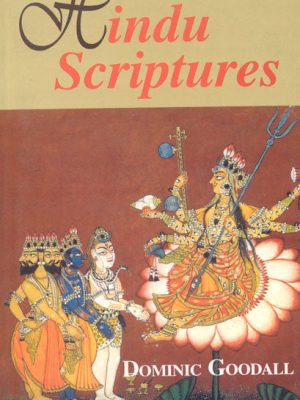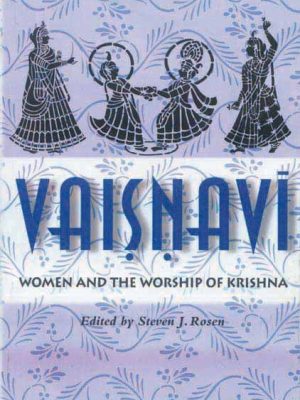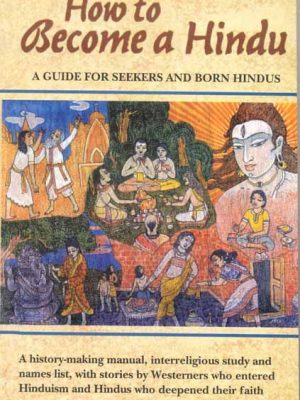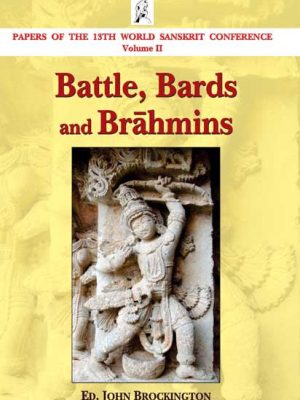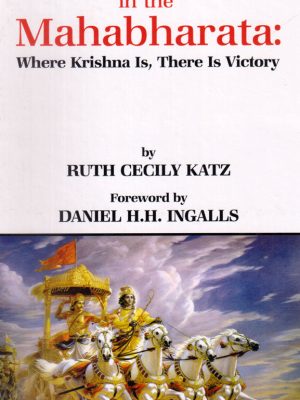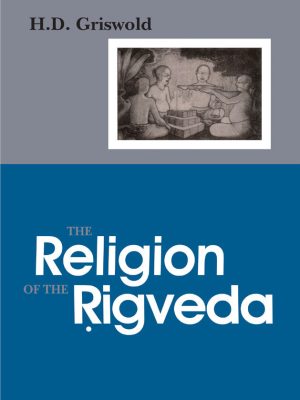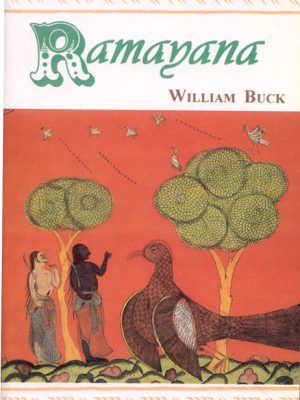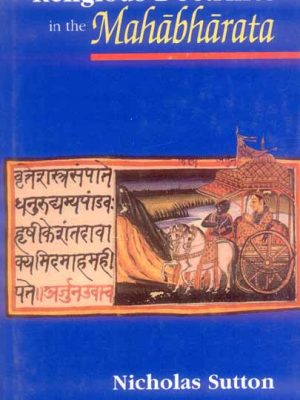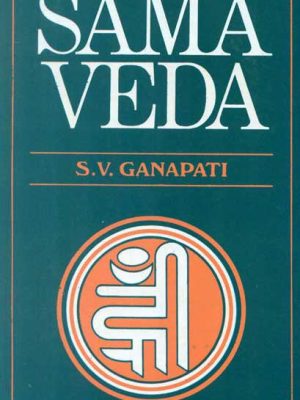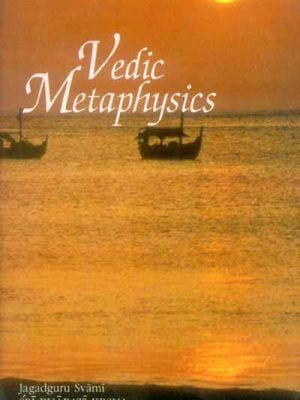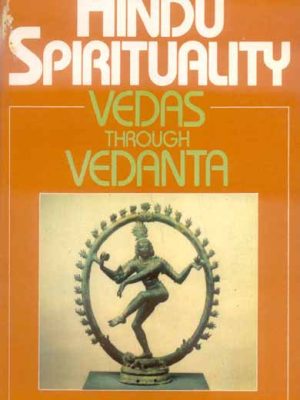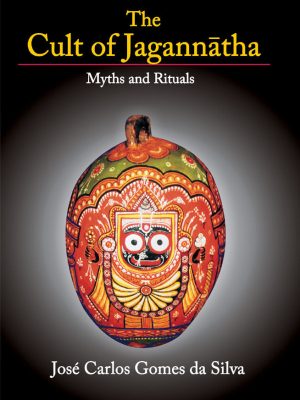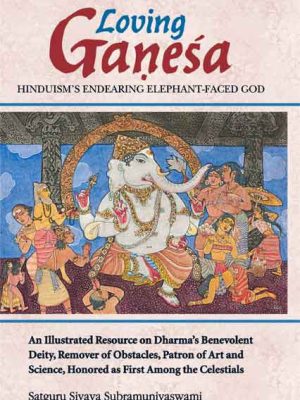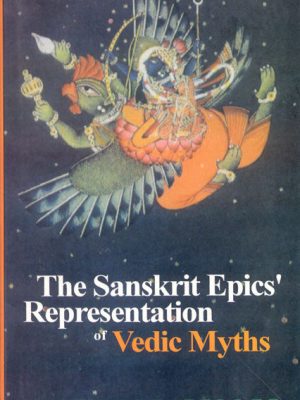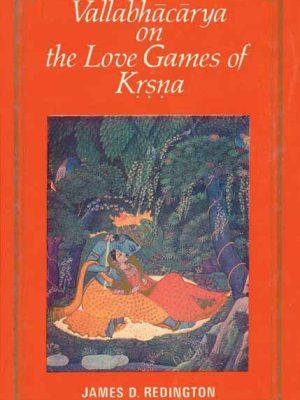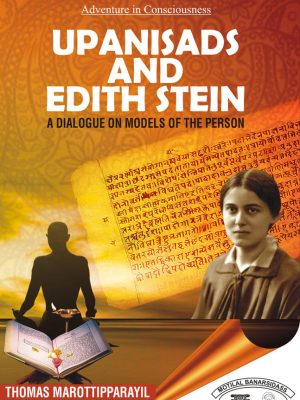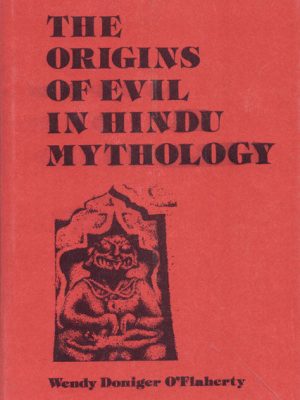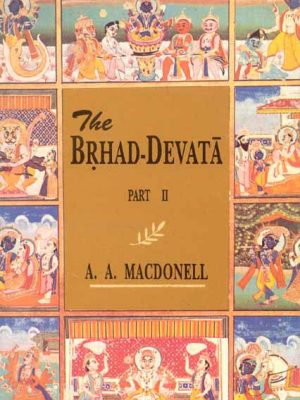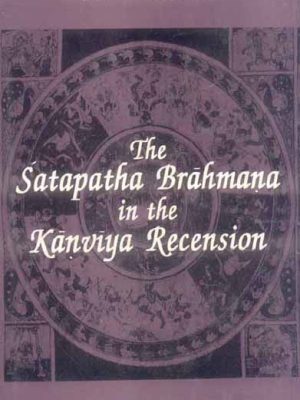Hinduism and Its Sources
-
Hindu Scriptures
Hindu Scriptures
Hindu Scriptures is a unique collection of Hindu texts spanning more than
twenty centuries.
Two anthologies entitled Hindu Scriptures have previously appeared in
the Everyman series alone, that of Nicol MacNicol in 1938 and that of
Professor R.C. Zaehner in 1966. This present title is the enlarged edition
of R.C. Zaehner’s anthology, with the addition of three fresh translations,
its broad range includes arcane hymns of the ancient Aryans, a manual of
prescriptions governing every aspect of the daily life of the orthodox, and
rich poetry that describes with heady sensuality the dalliance of Krsna and
the cowherd women of Vraja in the nights of the autumn moon. The texts are
arranged in chronological order and the Introduction explains the reasons
for their inclusion, sets them in context, and briefly characterizes their
contents.
₹725.00Hindu Scriptures
₹725.00 -
Vaisnavi: Women and the Worship of Krishna
Vaisnavi: Women and the Worship of Krishna
This collection delves into the touchy issue of gender and religion with openness and compassion, with a particular emphasis on Vaishnavism, one of the oldest and most textually rich religious traditions practised by humans. Steven J. Rosen has compiled a collection of eight articles that shed light on the lives of many female saints throughout history as well as the teachings that they left behind. These pieces were written by notable scholars, poets, and practitioners.
Author
Steven J. Rosen
₹725.00 -
How to Become a Hindu: How To Indeed A History Making Manual Presenting An
How to Become a Hindu: How To Indeed A History Making Manual Presenting An
How to Become a Hindu: How To Indeed A History Making Manual Presenting An
₹750.00 -
Battle, Bards and Brahmins: Papers of the 13th World Sanskrit Conference Volume II
Battle, Bards and Brahmins: Papers of the 13th World Sanskrit Conference Volume II
This volume, the second in the Proceedings of the 13th World Sanskrit Conference (Edinburgh, July 2006), reflects the continued increase in interest in the Sanskrit epics seen in recent years, containing no less than 19 articles (a larger number than in the corresponding volume from the 12th WSC at Helsinki) by a number of distinguished scholars in the section devoted to the Sanskrit epics. The great majority of the articles focus on the Mahabharata but several focus on the Ramayana, as well as one on the Harivamua. The variety of approaches adopted by their authors underlines the vitality of this area of research and collectively these articles make a major contribution to our understanding of the history of these massive works, their relationship to each other and their place in the total field of Sanskrit literature and indeed of Indian literature and culture as a whole. The articles are grouped according to the text that they are mainly focussing on (in the order Mahabharata, Harivamsa, Ramayana) and within that in an order which seeks to bring related topics together, beginning with the genealogical issues that underpin all of the narrative in each of the texts and ending with the study of a retelling of one of them, the Anandaramayana. The editor has ensured a degree of uniformity of appearance and of bibliographic reference but had no wish to rein in the diversity of expression and approach to be found in the feast of articles here assembled.
Author
JOHN BROCKINGTON
₹750.00 -
-
Ramayana (BUCK)
Ramayana (BUCK)
Compared to the western epics, the Ramayana and Mahabharata are more complete story of Hindu, religious, cultural and social imagination and more exact narration of evolutionary rise of man. In this book, William Buck has succeeded better than anyone else in conveying the spirit of the
original.
The task of presenting a faithful image of the original text, its metaphysical nuances as well as its chronological sequence the world’s largest epic in a small book is a stupendous task.
Mainly as a narration, the version of William Buck will serve as an interesting and complete tale to the English speaking reader. Valmiki was called the Adikavi or “first poet” of Sanskrit literature and some of his remarkable talent shines forth in the English rendering. The reader will find pleasure in reading it aloud to himself or the others.
₹795.00Ramayana (BUCK)
₹795.00 -
Religious Doctrines in the Mahabharata
Religious Doctrines in the Mahabharata
In this new edition of a classic text on the Mahabharata, the primary concepts and themes are discussed and evaluated. unique take on one of India’s best-known epics. A lot of positive feedback.
Author
Nicholas Sutton
₹795.00 -
Sama Veda
Sama Veda
It is said that the Vedas have existed from the beginning of time and are thought to be a revelation of heavenly knowledge given to rsis in ancient times. Before they were put to writing in very recent times, the four Vedas were passed down to us orally over a period of thousands of years, without any inaccuracy of even a word. The Sama Veda is one of the Vedas, and it was the last of the four Vedas to be written down. The length of each of the Vedas varies, as does the total number of mantras or hymns included inside them. The whole Sama Veda text written in Nagari script has been included in this book together with an English translation and some comments written in a fresh perspective. The book includes, in addition to the text itself, an extensive and critical introduction that provides readers, both researchers and students interested in this topic, with specific information that is valuable for them.
Author
S. V. Ganapati
₹795.00Sama Veda
₹795.00 -
Vedic Metaphysics
Vedic Metaphysics
In 1958, a Sankaracarya travelled to the western regions of India for the very first time in the country’s history. It was at the request of the Self Realization Fellowship in Los Angeles that the author, His Holiness Jagadguru Sankaracarya Sri Bharati Krsna Tirtha of Puri, travelled to the United States to disseminate information on Vedanta. This book is a collection of several of his lectures that were presented at that location.
The fundamentals of Vedanta are outlined in these lectures, which were delivered by a saint-yogi who was both an expert in the ancient Indian texts and was knowledgeable in the current sciences. They speak in a clear and concise manner while maintaining the integrity of their thoughts. Given that they are written in the present vernacular, it is likely that the modern mind will find them to be especially suitable. Despite being directed for American audiences, the talks share a message that is both timeless and applicable everywhere else in the world. The readers will find that the stages of spiritual inquiry and the routes to God-realization that are explained in these passages are of an enormous amount of practical value to them in their search for the sublime.
The Most Reverend Jagadguru Sankaracarya One of the four monasteries that the great Sankara established in the distant past, the Govardhana Pitha in Puri was led by Sri Bharati Krsna Tirtha, who served as the pontifical head of the monastery. After an outstanding academic career that included the study of Sanskrit, Mathematics, Philosophy, History, English Literature, and other scientific subjects, he studied Vedanta under the renowned Jagadguru Sankaracarya, Sri Sivabhinava-Nrsimha-Bharati at Sringeri, and he practised vigorous yogasadhana in the nearby forests. It was in these forests that he also discovered the hidden meaning of the Ganita-sutras of He accepted sannyasa in 1919.
Sainthood was not His Holiness’ only vocation; he was also a scholar, a religious speaker, a yogi-philosopher, and an orator. He had a profound understanding of the Hindu texts. In addition to this, he studied the sacred texts of other faiths with the reverence of a devotee and proclaimed the fundamental oneness of all world religions.
His Holiness established the World Reconstruction Association in 1953. This was a non-religious organisation with the goal of morally reorganising society as the primary focus of its activities. In 1960, he acquired the state of Mahasamadhi.\Author
JAGADGURU SVAMI SRI BHARATI KRSNA TIRTHAJI MAHARAJA
₹795.00Vedic Metaphysics
₹795.00 -
Hindu Spirituality (Vol. 1): Vedas Through Vedanta
Hindu Spirituality (Vol. 1): Vedas Through Vedanta
The current book is a part of a series called World Spirituality: An Encyclopedic History of the Religious Quest. This series aims to reveal the spiritual knowledge of the human race as it has unfolded throughout history and this volume is a part of that series. It is aimed to demonstrate the autonomy of the tradition in the historical evolution and draws from the greatest level of study from across the globe. The book pulls together and portrays the richness of the spiritual legacy of the human race. This book explores the timeless and unchanging aspects of the Hindu religion. The papers that are included in this book are broken down and discussed according to one of eight categories. The following is a synopsis of the first volume of Hindu Spirituality: The Vedas by Way of Vedanta In this research project, a social and cultural anthropologist as well as an expert in the field of the study of religion collaborated in order to investigate recent shifts that have occurred in the religion practised by the majority of people in Sri Lanka. According to the perceptions of the Sinhala people themselves, Buddhism proper has always coexisted in the religious sphere with a spirit religion. While redemption is central to Buddhism, the spirit of religion is more concerned with the flourishing of the world. Buddhism Transformed is a book that provides a description and analysis of the developments that have significantly impacted the nature of the Sinhala religious practise in each of these places. This book is the first of its kind to describe in a methodical manner the cultural effects of the degradation in the way that the “other half” of the population in Sri Lanka lives. Following the country’s independence in 1948, significant progress was made in the areas of health care and literacy, but the country’s economy was unable to live up to the soaring aspirations of the country’s rapidly growing population. People fell into poverty and were more mobile, which contributed to the decline of the village community. Changes have taken place in what the authors refer to as “Protestant Buddhism” as a result of the emergence of new psychological requirements brought on by new strains in Sri Lankan society (the Buddhism formed under Protestant influence after British conquest). More and more individuals are interested in and appreciate altered states of consciousness, and among spirit cults, gods with less stringent moral standards are rising to prominence. The authors conclude by arguing that occurrences in Sri Lanka that first seem to be unusual in the religious history of India are, in fact, not entirely new.
Author
Krishnan Sivaraman
₹795.00 -
The Cult of Jagannatha: Myths and Rituals
The Cult of Jagannatha: Myths and Rituals
Orissan ethnography is presented in a fresh light via the lens of The Cult of Jagannatha: Myths and Rituals. This book gives considerable evidence on the significance of religious orthodoxy, which stands in stark contrast to the mainstream interpretations, which centre on the impacts of tribal groups and the history of aryanization. In Orissa, the shift from the coastal to the interior areas is marked by significant demographic and sociocultural discontinuities. These discontinuities may be seen most clearly while moving from the coastline to the inland regions. These geographical variances are presumably a consequence of aryanization that occurred through time. The historical reconstruction of this process has been the primary pillar on which ethnological narratives have traditionally been built. Traditions that developed in the delta plain are said to have been significantly impacted by the local populations who lived there, particularly those traditions that are connected to the delta plain’s two most important centres: the city of Puri and the temple of Jagannatha. The importance of sacrifice symbolism to Puri’s religious system is shown by a number of myths and rites. In spite of the fact that it is explicitly linked to an initial asvamedha, which refers to the sacrifice of a horse in the Vedic tradition, the construction of the big temple is nevertheless seen as a modification of the brick-fire altar. These relationships are further confirmed by an astonishing network of orthodox representations, both Vedic and Hindu. [Citation needed] [Citation needed] This acknowledgment of orthodoxy brings us back to the alleged differences between regional traditions. How should one understand the “specificity” of Puri’s iconography when it comes to his gods? What kind of respect should be accorded to the Sudras who are in charge of the rituals at the major temple? The current book offers fresh insight into these time-honored inquiries, which are addressed. The “strangeness” of Orissan ethnography is not as baffling as it may seem; rather, it is a specific but exceedingly consistent representation of Indian cultural norms and customs.
Author
Jose Carlos Gomes da Silva
₹795.00 -
Loving Ganesa – Hinduism’s Endearing Elephant-Faced God: An illustrated resource on Dharma’s Benevolent Deity, remover of obstacles, Patron of art and science, Honored as first among the Celestials
Loving Ganesa – Hinduism’s Endearing Elephant-Faced God: An illustrated resource on Dharma’s Benevolent Deity, remover of obstacles, Patron of art and science, Honored as first among the Celestials
There is no other novel about this well-loved deity who has an elephant’s face that is more emotionally moving. This brilliant work of art will bring the Lord of Dharma to life for you as you experience it. It makes contacting this merciful Lord simple and gives one motivation to do so.
“In this book, Satguru Subramuniyaswami demonstrates his extensive knowledge, as well as his profound intuition and wisdom, as well as his heartfelt devotion and love of Lord Genesa. Lord Genesa is known as the Protector of the Sanatana Dharma, the Remover of Obstacles, the Patron of Arts and Science, and the Mediator and Intercessor between Man and God. He is the God who is on our side, who is our friend and who actually protects and provides for us.
“The Great Genesa is presented to the reader in a language that is exemplary, unambiguous, and refined, using words that are easy to understand and with a sense of humour that is invigorating and subtle. Along with mantras, prayers, and pujas to show homage to the kind elephant-faced God, each and every facet, relation, symbol, and meaning of Lord Genesa has been expertly described and illustrated. Many people have the misconception that Lord Genesa is an obese, arrogant, elephant-headed deity who is connected to the Hindu pantheon in some way, despite the fact that he has never truly gotten to know any of the Hindu deities. In the event that this has been the case for you, then Loving Genesa has arrived at the perfect moment to provide you with the appropriate responses to all of your inquiries and to bring you closer to the magnificent and endearing Ganapati, who is the Keeper of All Knowledge and the Great Ruler of the Universe.
“My deepest gratitude goes out to Satguruji Subramuniyaswami for the gift of this magnificent book, which is a source of an inexhaustible supply of heavenly nectar, enlightenment, and happiness. I pray that all of you who read this may be blessed with pleasure, success, and the heavenly protection of the loving and compassionate Genesa.” (Sri Sri Paramhans Swami Maheshwarananda, International Sri Deep Madhavananda Ashram Fellowship; Vienna, Austria)
Author
Satguru Sivaya SubramaniyaSwami
₹795.00 -
The Sanskrit Epics Representation of Vedic Myths
The Sanskrit Epics Representation of Vedic Myths
As the name of this research project, “The Sanskrit Epics’ Representation of Vedic Myths,” suggests, my objective is to investigate the manner in which certain myths that are first presented (as far as India is concerned) in the Vedas, and more specifically in the Rgveda, are retold in the Sanskrit Epics, the Mahabharata and the Ramayana, and to investigate the manner in which the Epics re-use the mythological material Before we go any further, I will first provide a concise synopsis of the type, contents, and dates of the documents that were discussed earlier in this paragraph. The various passages ‘holy speech’ is what the phrase’mantra’ or ‘brahman’ meant when it was first used, and the name ‘Veda’ referred to the earliest layer of literature in the Sanskrit language. According to later Indian tradition — in particular, according to the Mimamsa, which is a school of Vedic exegesis — the Veda is eternal and authorless, and it was a’revea1d’ to the Vedic rsis or seers. Other names for the Veda include the sruti, which can be translated as “that which has been heard,” or the “revelation.” The Veda is composed of many layers of writings; the earliest of these are known as the Samhitas, which literally translate to “collections.” There are four different Samhitas. The Rgveda Samhita, also known as the “collection of poems,” is the earliest of the four. It was written between 1500 and 1000 BCE and is organised into ten mandalas, also known as books. The tenth mandala is often believed to be a more recent addition to the collection in comparison to the other nine mandalas.
Author
DANIELLE FELLER
₹795.00 -
Vallabhacarya on the Love Games of Krsna
Vallabhacarya on the Love Games of Krsna
Vallabhacarya on the Love Games of Krsna this book provides a translation of a classic commentary on the six chapters of Book 10 of the Bhagavata Purana that chronicle Krsna’s love games with the Gopis. The original commentary was written in Sanskrit, and this book includes a translation of the Sanskrit text. The commentary is known as the Subodhini of Saint Vallabhacarya, who was the originator of the tradition. It begins with an explanation of Vallabhacarya’s essential viewpoints on the love games, which can be found in the introduction.
About the Author(s)
James D. Redington
₹795.00 -
The Origins of Evil in Hindu Mythology
The Origins of Evil in Hindu Mythology
James Austin’s insights into the fundamental connections that exist between Zen Buddhism and brain science are continued in this volume, which is a follow-up to his extremely popular book Zen and the Brain. In Zen-Brain Reflections, Austin, a clinical neurologist, researcher, and Zen practitioner, investigates the growing psychological processes and brain alterations connected with the path of long-range contemplative training. Austin is also a researcher at the University of California, San Francisco. Not only does Austin draw from the most recent findings in neuroscience and new neuroimaging investigations, but he also pulls from Zen literature and his own experience with different states of consciousness. This book picks up exactly where the last one left off. Zen-Brain Reflections. It provides answers to issues such as “how exactly do placebos and acupuncture impact the brain?” Can scientists using neuroimaging pinpoint the locations in our brains where our concepts of self first take shape? How can the most cutting-edge brain imaging techniques be used to better effectively monitor meditators? How is it that extensive amounts of time spent meditating, along with fleeting experiences of enlightenment, may bring about fundamental changes in the physiological makeup of the brain? In a number of the chapters, there are theories that may be tested that indicate methods to associate normal brain processes and the practise of meditation with the occurrence of unusual states of consciousness. After making a quick introduction to the subject of Zen and discussing the most current findings from research into meditation, Austin discusses the most recent findings from research on the amygdala, frontotemporal connections, and paralimbic extensions of the limbic system. After that, he investigates the many states of consciousness, from the earliest, most shallow absorptions to the latter, most significant “peak experiences.” This discussion starts with the states known as kensho and satori and includes an updated study of the many ways in which these states convey “oneness.” He refers beyond the even more advanced phases toward that uncommon continuing degree of enlightenment that is characterised by the manifestation of “sage wisdom.” Last but not least, in
Author
W.D. O’Flaherty
₹850.00 -
